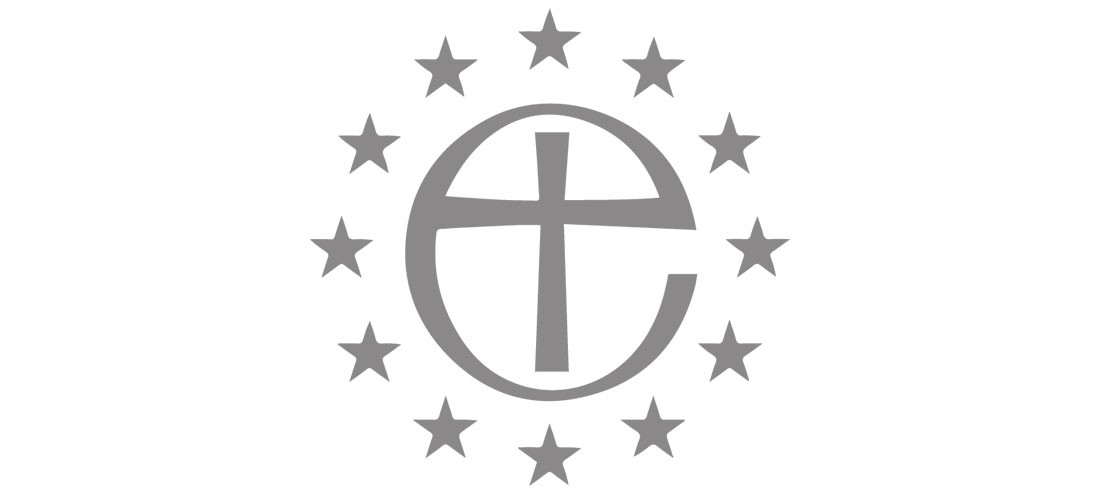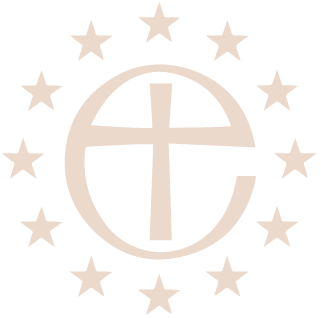
Trinity 2 10th June 2018
Revd. Canon Leonard Doolan
One of the paintings of the western artist Lucas Cranach the Elder famously shows Adam and Eve in the garden of paradise. The painting dates from 1528 and is now housed in the Uffizi Gallery in Florence, but originally it was an altar panel.
The picture shows an apple tree, Adam to one side Eve to the other. Around them are animals and birds all contentedly mingling about, even though there are deer, a wild boar, birds, and maybe not surprisingly a lion and a lamb; A scene of blissful co-existence and interdependence.
Adam and Eve are naked, of course, but for some ivy placed in vital places. With one hand Eve is handing an apple to Adam. With the other she is stretching up to pull down the branch from which she has plucked the fruit. Between them up in the fork of the branches of the tree slinkily twisted around a branch, and almost central to the viewers gaze, is a serpent, a snake. The snake is entwined like an ancient Kaa of Rudyard Kipling or Walt Disney fame. ‘Trussssst in me’.
Cranach is attempting to show that moment when sin entered into the relationship between God and humanity, between Man and creation, and between the animals of God’s creation. The Lamb can no longer lie down with the lion. Disobedience causes the disconnect between the Paradise for which we were created, and the lost Paradise which we have created.
So, my friends, we are in a fallen world; a world where perfection and original purpose evades us, usually by our own choices. Some might say that this painting shows the beginning of the end. Humanity’s fate sealed by the sin of Adam – since by one man comes death. It is also shows the beginning of one of the greatest negative traits in humans – our need to blame; our incessant desire to find someone responsible, to take the blame off me and pass it to another. How often when we are perplexed by some tragic event do we seek to find someone culpable. In fact the priority is to shift any responsibility and its guilt on to someone else.
When questioned by the Boss, Adam says that it was Eve’s fault; when Eve seems to be holding the responsibility she says it was the talking snake’s fault (trusssst in me). I suppose on this pattern we might as well blame the poor old apple for being there in the first place.
All of this a sign of mankind’s weakness, sinfulness, in this lost Paradise.
Yet, if some people think that this story, and the painting by Cranach represents the beginning of the end, in which sin, evil, and our personailized devil runs amock, I think I would prefer to call it the beginning of the new beginning. This new beginning is narrated to us in our salvation history recorded through scripture, and it brings us to the gospel reading for today.
As the crowds begin to gather around Jesus to hear his teaching, and as the result of seeing and hearing miracles, the scribes from Jerusalem try to blame the devil for what Jesus is saying and doing.
Jesus is not doing these things it is Beelzebub. They are giving energy to the work of the one whose existence is possible because of the fallen Paradise. Even the close family of Jesus is beginning to believe this negative messaging. The devil is alive and well in 1st century Palestine ‘Trussst in me…’
How can Jesus be doing Beelzebub’s work when he is countering the work of Beelzebub in people’s lives, healing them, restoring them, making them whole. This is the work of the beginning of the new beginning we are offered.
Jesus is the one who fulfils our restoration, and in him is the new Adam. In him Paradise is regained and mankind is once again made one with God the Creator. In his resurrection Christ one again places us in the garden of delight, and at the centre is another tree, the tree of shame has become the tree of life, his cross.
In making us one with God again, through his life, death and resurrection mankind can once again be fully restored to the glory of God to become our natural selves again.
However, in saying this, I know I could be accused of naivety and theorizing. We all know the effect of the fall from grace; our sinfulness; our capacity for evil; and the grip that our personal devils can have.
On Solonos there is a little chapel dedicated to the 2 healers, doctors, Cosimo and Damianos. In this little chapel, the liturgy that celebrates the glory of God and the message that we are redeemed in Christ’s death and resurrection, takes place Sunday by Sunday. Outside in the square beside the Law School it is possible to see some of the saddest cases of human hopelessness. Drug abuse is open and confident, syringes litter the little pockets of garden; drug users try to find a part of their bodies not already covered with the effects of needle use. Cocaine is only €4 a hit.
The garden of delight is proclaimed in the church. The garden of hell is outside its doors as the hope of vulnerable human beings gives way to the powers of weakness, hopelessness and evil. Beelzebub has his place. Our grip on all that is good and all that is beautiful is fragile and we are obliged to do all we can to help others to step away from the grip all that is evil and ugly, so we cannot just withdraw into our safe little churches. The work of the Kingdom of God is an obligation on us all even in small ways.
We have in Christ the vision of the garden of delight and our task is to share that delight with others. ‘Trussssst in me’ says the serpent.
‘Do not let your hearts be troubled. Trust in God, trust also in me’ says Jesus. There is the dilemma, but I think we know who to trust.


No Comments